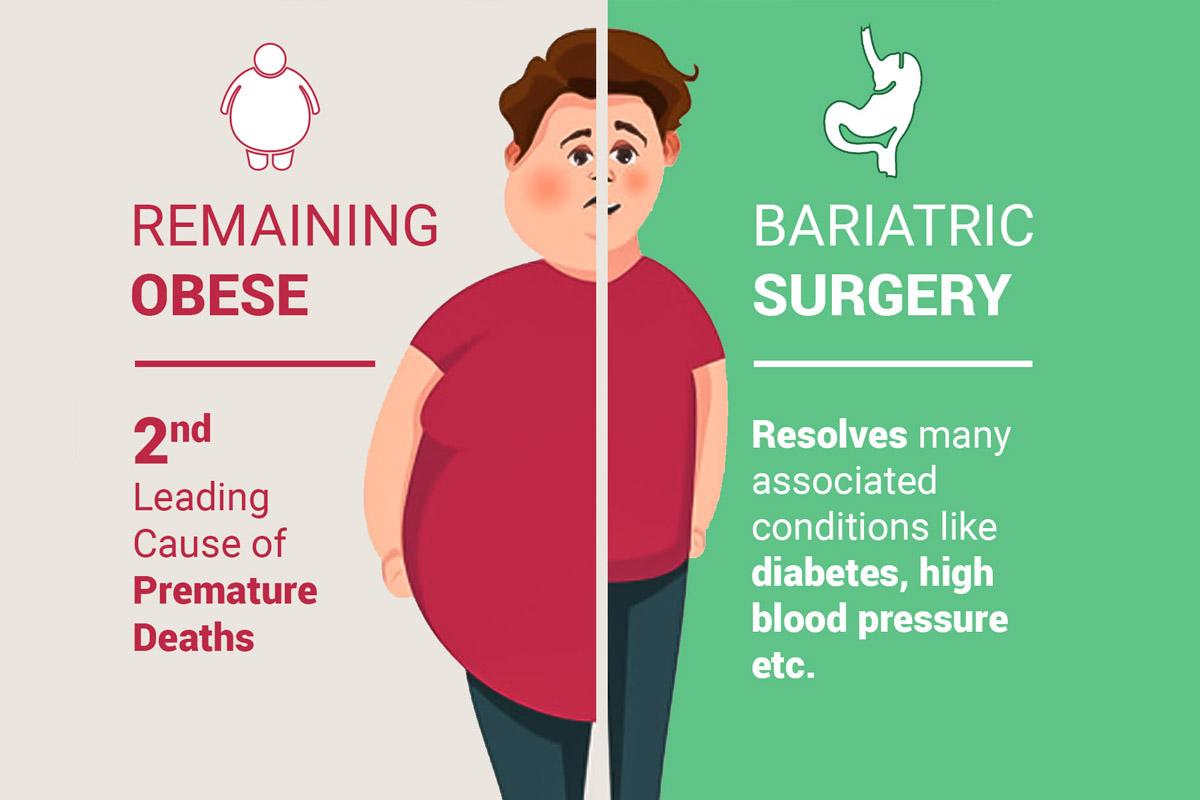There’s good reason for the increased focus on obesity recently; the problem is getting so bad that the American Obesity Foundation has declared a “obesity pandemic.”
From 1999 to 2020, the rate of occurrence increased from 30.5 percent to 41.9 percent. During the same years, morbid obesity (also known as extreme obesity and class 3 obesity) grew from 4.7% to 9.2%.
In response to these developments, the American Medical Association classified obesity as a complex, chronic disease in 2013. The report also recognized the “enormous humanitarian and economic impact of obesity as requiring the medical care, research, and education attention of other major global medical diseases.”
Obesity vs. Morbid Obesity
Body mass index (BMI) is used to diagnose both obesity and morbid obesity. A person’s index is calculated by dividing their height by their weight. Simply said, it is your body mass index, calculated by dividing your weight (in kilograms) by the square of your height (in meters).

The U.S. government’s disease-prevention headquarters. Concerning the body mass index of adults.
The body mass index (BMI) is an inaccurate and outmoded metric. It does not account for individual differences in anatomy, culture, sexual orientation, or chronological age.
Definitions Matter
Despite their usefulness in determining who is obese or seriously obese, there are other motivations for creating such categories and classifications. Patients’ eligibility for surgical and pharmaceutical aids in weight loss is also assessed using these categories.
A BMI of 40 or higher is considered diagnostic of morbid obesity, which may make a patient eligible for bariatric surgery or specific anti-obesity drugs.
Cancer, cardiovascular disease, heartburn, obstructive sleep apnea, and Type 2 diabetes are all linked to obesity, and such measurements can suggest a person’s susceptibility for these diseases. In general, as one’s body mass index (BMI) rises, so does one’s risk of developing one of these diseases.
Risks and Complications of Morbid Obesity
Obese people are aware that their condition can affect even fundamental functions like breathing and moving around. This implies they may tire quickly from even a short stroll and fall behind the pace of others.
Obesity and morbid obesity are associated with a wide range of serious to fatal consequences. However, it is not always easy to make a clear distinction. However, not all complications are as obvious as arthritis. Weight gain of just 2 pounds raises one’s risk of developing arthritis by 9-13%.9
Obesity complications likely to increase when body mass index (BMI) increases from class 1 to class 3. (And a patient may feel even worse as a result.)
Treatment of Morbid Obesity
Consider receiving a morbid obesity diagnosis as the first, but crucial, step toward mitigating these risks and enhancing your health and quality of life.
A bariatric healthcare specialist, psychologist, exercise physiologist, and licensed dietitian and nutritionist could all be part of a treatment team. This team will work together to build a safe and specific weight-loss plan for you.
It’s possible that the plan will incorporate more than one strategy, including modifications to eating and exercise habits, the use of prescription drugs, and perhaps surgical procedures to help with weight loss. The best results are often achieved by combining different strategies, as shown by the available research. “Successful” means losing weight healthily and continuing to do so over time.
Changing Behavior
As part of your effort to alter your habits, you should begin eating healthier and engaging in more physical activity. The first steps are to commit to a healthy lifestyle by making a plan to lose weight and sticking to it.
This diary can assist discover triggers that may cause you to overeat and avoid them, reward new actions (such starting a fitness activity), and perhaps acquire new ideas regarding body image. Establishing a regular sleep routine and cultivating a support system (including family, friends, and coworkers) can also be helpful.
Dieting
A low-calorie diet entails prioritizing healthier options over less-healthy ones and cutting out greasy, processed meals entirely. The majority of people who successfully lose weight do so by cutting their caloric intake by 500 to 1,000 calories per day.
Exercising
Finding your optimal level of physical activity is usually the easy part; the real challenge is in maintaining that level over time. The aspect that could take some experimenting is locating a satisfying outlet.

After all, those with morbid obesity may have trouble with physical activity. Because of this, you may find that (at least initially) your exercise consists of reserving a parking spot more and further from the entrances and riding an under-desk bike for brief intervals multiple times per day.




